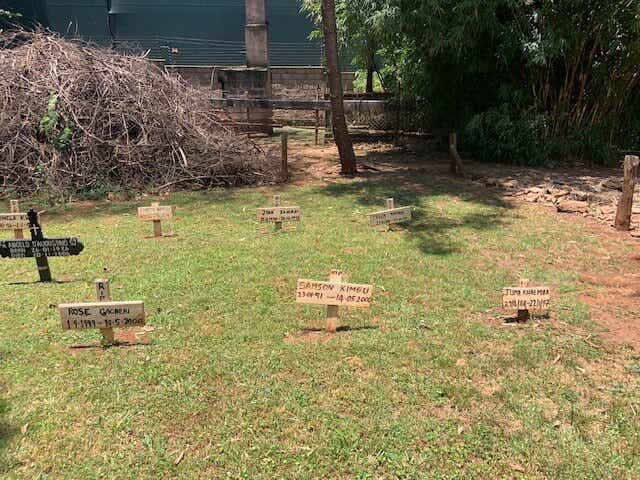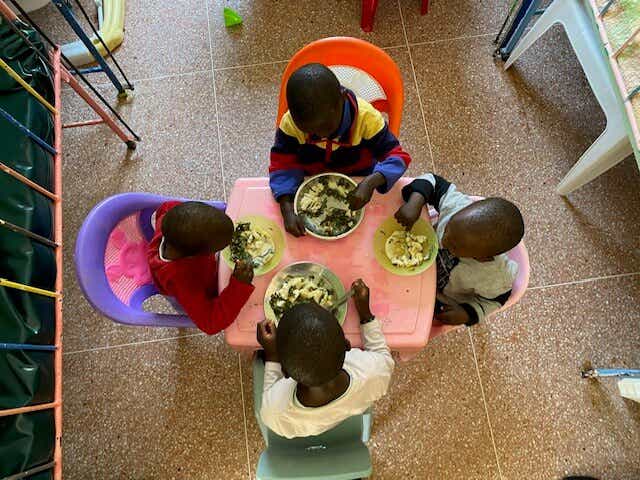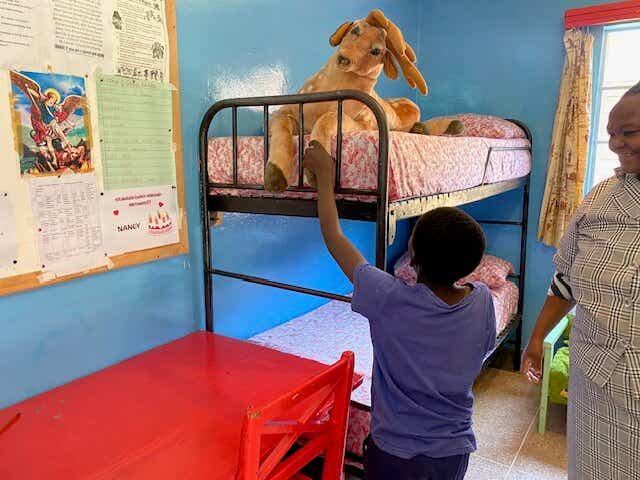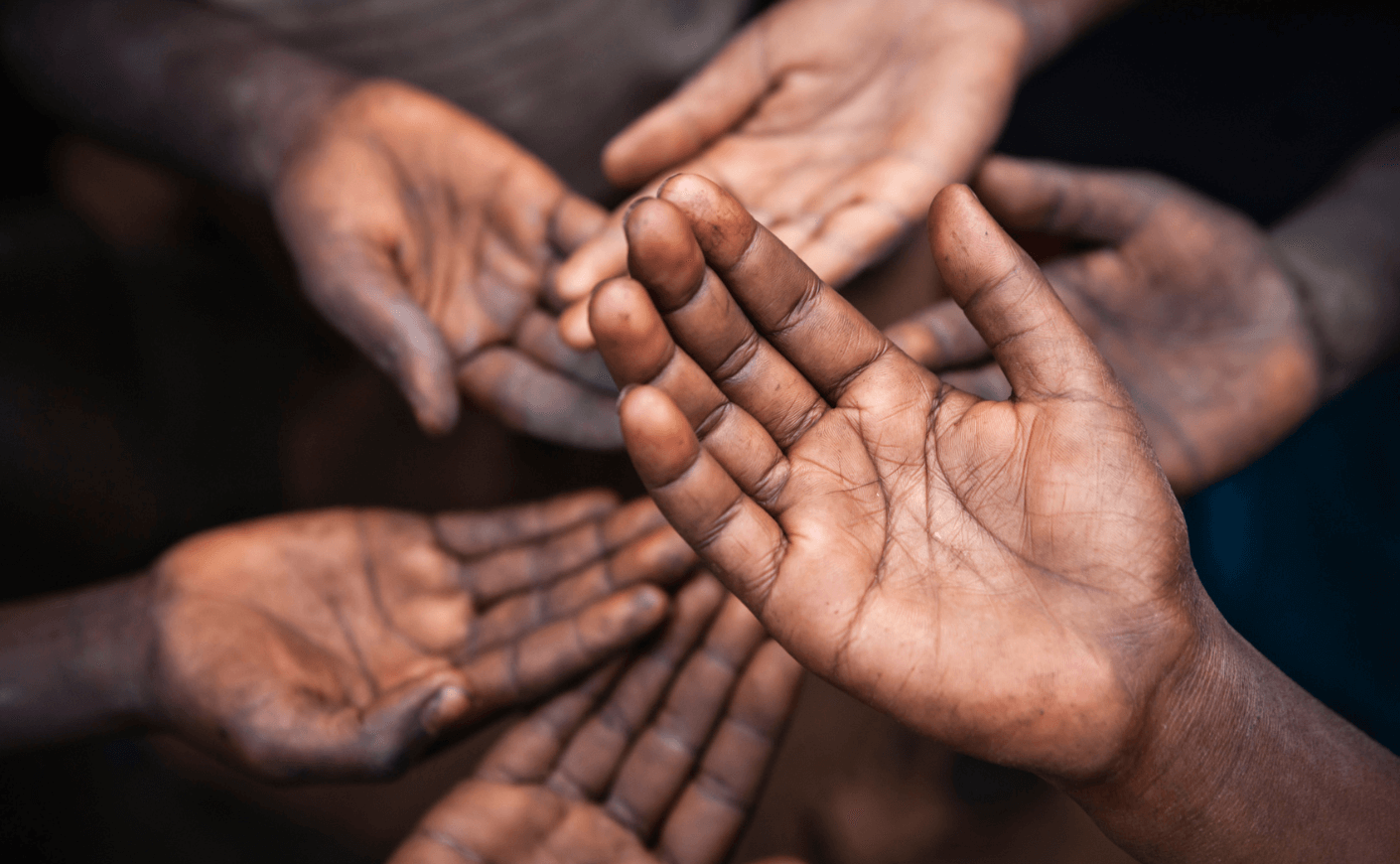A week ago, I found myself on the outskirts of Nairobi, where a dusty road leads to a quiet, almost forgotten cemetery behind Nyumbani, a home for orphaned or abandoned children living with HIV/AIDS.
There, over 60 simple wooden crosses stand in silent testimony to the lives of children whose names I won’t soon forget — among them, Samson, 9; Joan, 6; Rose, just a year old; and Irene, who made it to age 13. Eight of these children have died since 2004 alone.And now the future of Nyumbani — and the future of thousands of children who live there — hangs by a thin thread. That’s because President Donald Trump has frozen all U.S. foreign aid, and moved to abruptly shut down USAID entirely.

Each cross in the Nyumbani cemetery tells a story of a precious life lost before 2003 — the year when George W. Bush introduced the U.S. President’s Emergency Plan for AIDS Relief (PEPFAR). It was a turning point.
For anyone who has never felt the terror of HIV/AIDS, it’s difficult to understand the profound and beautiful impact that moment had. Before PEPFAR, an HIV diagnosis for a child in Kenya was almost invariably a death sentence. But with the introduction of anti-retroviral drugs to their treatment, everything changed. At Nyumbani — whose name means “home” in Swahili — I witnessed a living testament to that transformation.
I met Sister Julie Mulvihill, a feisty Franciscan nun from Philadelphia, whose eyes shimmer with both hope and sorrow. Twenty years ago, she arrived at Nyumbani — founded by the Catholic Church — filled with pride, and buoyed by her country’s commitment to help. Today, however, her heart is heavy with disappointment and a sense of betrayal by her own government. Sister Julie now dedicates time each day to a relentless letter-writing campaign — pleading with senators, congressmen, and even former President Bush himself — to keep the life-saving drugs flowing. The home meant so much to the Bush family that she remembers when his own daughters Jenna and Barbara paid a visit.
“Without these drugs, our children will not only die, they will suffer,” Mulvihill says, her voice strong with conviction.

In an old metal cabinet in the home’s medical clinic, I saw the stark reality for myself. The shelf once stocked monthly with life-saving anti-retroviral medications is now more than half-empty — a visual reminder that the fight for these children’s lives is far from over.
No one has any idea when — or if — another truck of medication will arrive.
Judith Wamboye, the executive director of Nyumbani: Children of God Relief Institute, sums it up in a single, chilling statement: “We are living on a rumor — a rumor that the ARV drugs will be exempt from the USAID cuts, and that funding will resume. But what if it doesn’t? These children cannot survive on a rumor.”
Nyumbani cares for 102 children. I watched the youngest — a two-year-old boy who arrived just six months earlier malnourished and fighting tuberculosis and HIV — now laughing and playing with a plastic helicopter. William is chatty and curious, a typical toddler. His transformation is nothing short of miraculous — yet it’s built entirely on the availability of proper medication.
I can’t shake the question that haunts me: What happens when the funding evaporates?
Wamboye’s worry is playing out in real time. Without USAID support, not only will Nyumbani struggle to care for the children already within its walls, but it will also face an influx of new, desperate cases. The mobile clinics that once served the eight surrounding slums are closing, and workers have already been laid off. Routine checkups have almost stopped, leaving illnesses undetected and untreated. Parents — overwhelmed and without options, says Wamboye — will abandon their children.

That’s how 10 year old Robert ended up in the home. He was diagnosed too late, and by the time social workers found him dying in his corrugated metal shack, he had already suffered partial paralysis. With the treatment he’s stabilised, he’s learning to walk and he’s surrounded by love and support. I remember the moment Robert said his own name and every other child erupted in cheers. Without those drugs, Robert won’t survive: It’s that simple.
“We cannot turn these children away,” Judith says. “But what happens when they come, and we have nothing left to give?”
Despite the dwindling medicine, there is a grassroots movement of kindness. Kenyans who can afford it bring food, clothing, and essentials. International donors — from Scotland, Ireland, the Netherlands, Germany, and Canada — have helped rebuild and repair the facilities, stock the library, and ensure that the children have a semblance of normalcy. Yet nothing can replace the critical, life-sustaining drugs these children need.
Generous contributions from around the world (including Japan, Australia, and the United Kingdom) have even helped establish an internationally accredited diagnostic laboratory. I watched as technologist Winifred Mwangi opened a chest freezer filled with 300 vials of blood samples, all waiting for analysis. Each one represents a child whose life depends on treatment.

Adoption, once considered a potential solution for these kids, has been stalled by deep-seated stigma. In perhaps one of the saddest developments, Sister Tresa Palakudy, who’s worked at the home for 29 years, says, “Even though a law was passed allowing the children to be adopted, nobody came.” The weight of a sick child remains too heavy for many to bear.
But this isn’t just a story about Nyumbani. It’s not solely about the children already in its care. It concerns the thousands — perhaps millions — of vulnerable children worldwide whose lives could be saved by the reversal of one executive order signed in the Oval Office, 7,500 miles away.
Asked what she’d say to those in power, especially those making decisions about USAID funding, Wamboye is gravely concerned. “For us, this is about human life. The U.S. has been so kind for so many years. I ask them to listen — not just to us, but to their own citizens, the ones who have been donating and supporting this work for decades. If we stop now, we risk undoing all the progress we have made. We risk going back to a time when we were burying children every month. That is not a future we can accept.”

For now, the children of Nyumbani, on March break during my visit, laugh and play in their well-kept dorm rooms. They climb on the monkey bars in the playground, oblivious to the ticking clock. Without urgent intervention, their laughter dies with them.
The wooden crosses in that quiet cemetery on the outskirts of Nairobi are more than just memorials — they’re a haunting reminder of what could be.
Lisa LaFlamme is a Canadian journalist and Journalists For Human Rights ambassador/host of Journalists For Human Rights podcast and Carry The Fire podcast.
*All photos by Lisa LaFlamme








